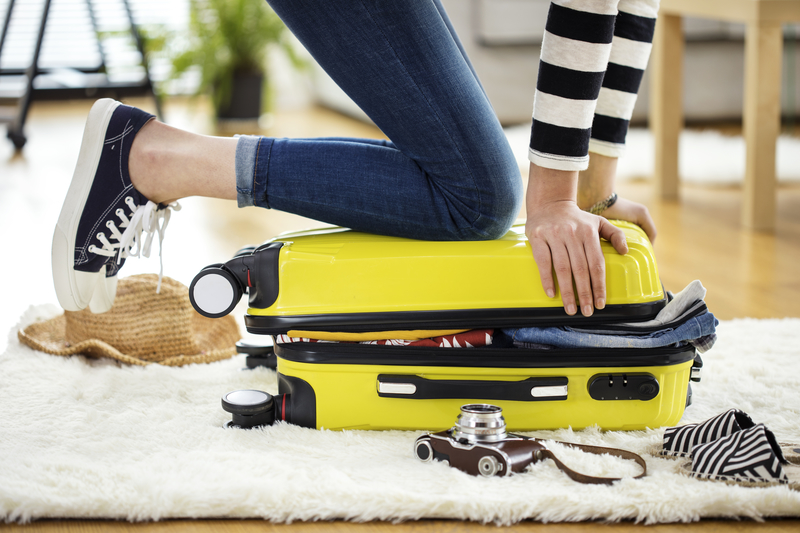Many young dancers dream of touring with a company or show. You’re doing what you love. You’re being paid to travel. It’s a chance to see the world with a group of people you’re close to (or if you’re not, you will be by the end of it). But take it from the professionals, living life from your suitcase can wear you down if you’re unprepared. Below is a compilation of advice from real artists on the road. Dance Informa asked dancers from the likes of Complexions Contemporary Ballet, the Finding Neverland national tour, Ailey II and others for their top tour tips.
Let’s start with what to pack. In all likelihood, you won’t be given much leeway in terms of bags allowed. Whether the airline, the tour bus or your own company manager sets a size or weight limit, you won’t want to be lugging luggage throughout your travels anyway. But if you’re gone for weeks or months at a time, it can be difficult to know what you’ll need. The obvious answers can get packed first: dance clothes, dance shoes, hair stuff, stage makeup, warm-ups.
Victoria Santaguida of Nimbus Dance Works brings up an important point on where to pack what. “Never put dance shoes or costume materials in your checked luggage, in case it gets lost.” Just like your passport and valuables, any item that you’ll need on or for stage goes in your carry on. You do not want to replace your pointe shoes last minute in a city you don’t know.
Maddie Parrish, who plays Peter Pan in the Finding Neverland national tour, says, “Pack basic colors for mixing and matching. You don’t need many clothes other than rehearsal clothes and comfy clothes.” Unlike pointe shoes, clothing is the kind of thing you can easily pick up along the way, if needed. Going to a gala, fundraiser or dinner? Versatile pieces are your saving grace. Bring a pair of heels or dress shoes and some jewelry that you can use to dress up an outfit. Not sure of the weather where you’re headed, or packing for multiple seasons? “Pack layers,” emphasizes Parrish, who is currently two months into a nine-month tour.
Besides clothing, there are a few creature comforts you’ll want along the way. Alexander Ellison of Montréal’s contemporary dance company, Cas Public, lists his headphones as a must-have. Chiming in from an airport in northern Canada, Ellison was glad to have them during a travel delay.
New York-based dancer and dance photographer Chris Peddecord learned to pack a pack of cards, and to always have ibuprofen on hand during his tours with Repertory Dance Theatre. When you need a pain killer, you need it right away. And if you’re in a foreign country, medicine is the last thing you want to buy in a language you don’t speak. For those old enough to enjoy a glass of wine, Peddecord also notes, “Very few hotels have wine keys,” so bringing your own is key.
Maybe more importantly than what you bring, the habits that you develop and practice while on tour can have a huge impact on the overall experience. Being away from home for such a stretch of time can be hard. Leonardo Brito of Ailey II brings a notebook to put his memories and feelings in. “It’s a nice way of keeping memories safe,” he says. “On tour, you go to so many places in a very short period of time. It also works as a therapeutic tool.” Brito makes sure to learn a little about each place he visits, be it about the people, nature, food, architecture or whatever is unique to that area.
Parrish suggests, “Be intentional about communicating with your loved ones. Things can get busy, and being far away for a long time can cause relationships to sometimes fizzle out, so make sure you carve out the time to check in on your people!”
Santaguida adds a practical point. “Text or call people when you’re on WiFi.” If abroad, and depending on your phone plan, keeping in touch can get expensive. Apps like WhatsApp, FaceTime and iMessage can help keep you connected while keeping costs down.
Developing a routine that you can maintain no matter where you are is a good way to give yourself a sense of consistency when your sleeping arrangements, what you eat, who you spend your time with and your daily schedule is often out of your hands. Cross-training not only helps keep your body in tune, but it can also help you take an hour or two of your day into your own hands. Depending on the intensity of your performance schedule, what classes the company or production provides, and what’s expected of you each show, your body might need restorative movement, intensive training in target areas, or attention to areas that aren’t being used so as to avoid muscle imbalance. The good news is you’re surrounded by fitness professionals. Chances are you can trade a massage for a yoga lesson from a fellow castmate. Training that doesn’t require machines is best, as you never know what you’ll have access to.
When you’re signed on to a show for months at a time, burnout can be a big problem. Putting time in to activities that aren’t dance-related can help prevent that. That way, your whole day (then week, then month, then entire contract) isn’t focused solely on dancing. Try studying a new topic, practicing a new skill, or bring a book you’ve been meaning to read. Anything that you can pick up and put down on the go. It’s important to take a break, and to engage in other activities, just like you would (or should) when you’re dancing at home.
Last words of wisdom go to Maxfield Haynes of Complexions. “Definitely stay hydrated. Traveling takes a lot out of you.”
By Holly LaRoche of Dance Informa.















